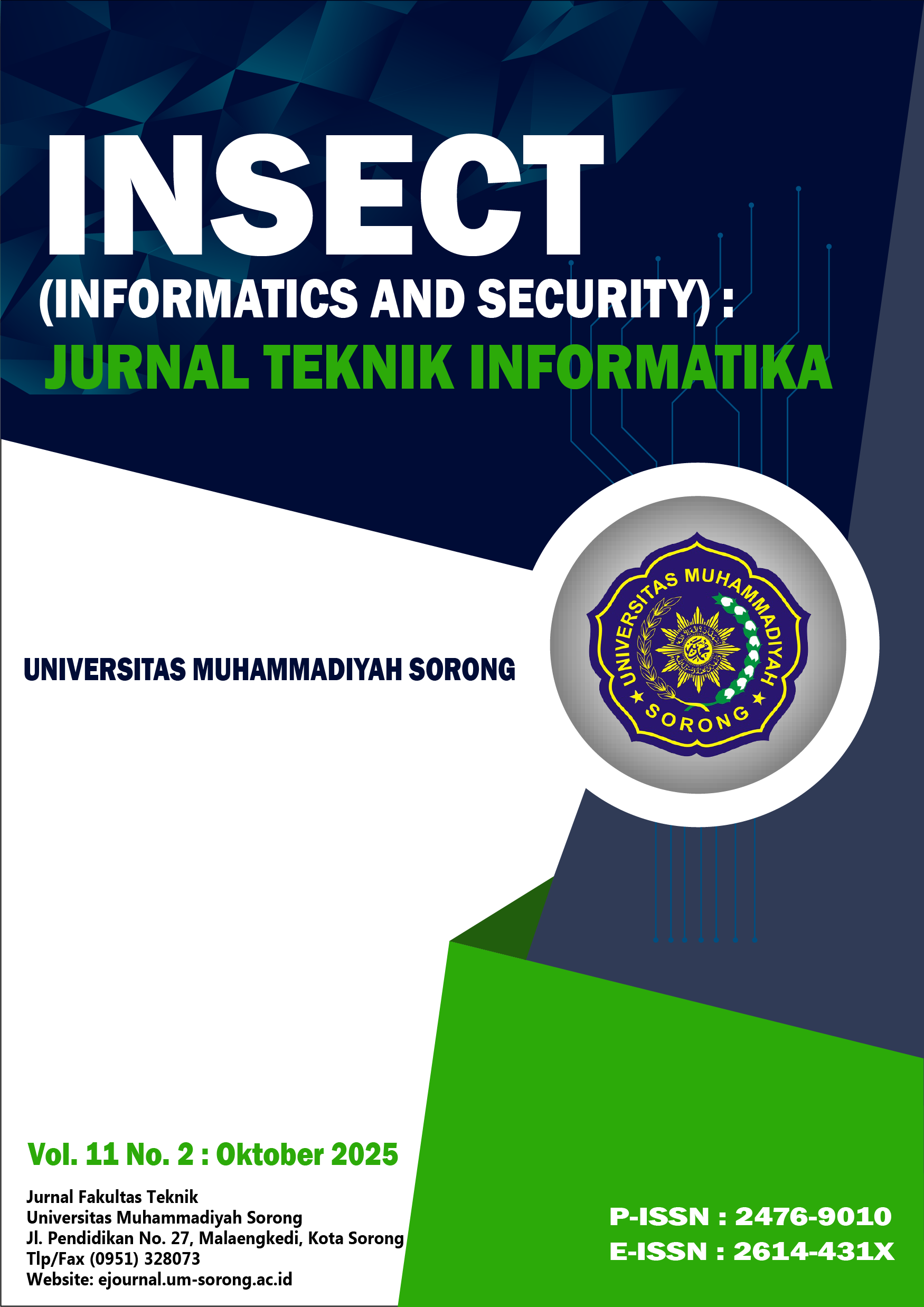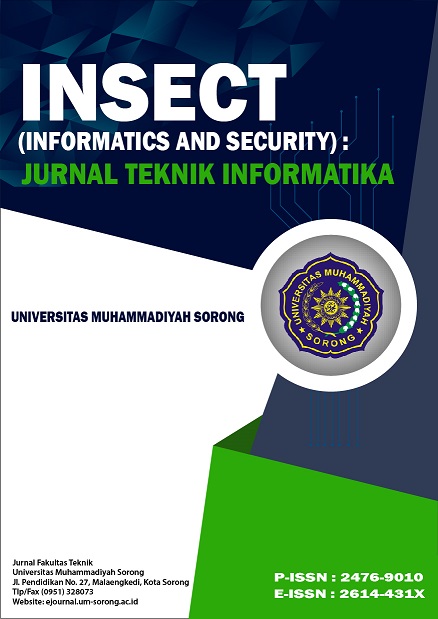Geographic Information System For Liliquefaction Potential Mapping In Gorontalo Province
DOI:
https://doi.org/10.33506/insect.v11i2.4811Keywords:
Geographic Information System, Soil-Related Disasters, Liquefaction, SUSAbstract
This research discusses the development of a Geographic Information System (GIS) using a prototype-based method for mapping liquefaction potential in Gorontalo Province. Liquefaction is a geological phenomenon that occurs when soil loses its strength due to earthquake tremors, potentially causing severe damage to infrastructure and buildings. The main objective of this study is to provide spatial information related to areas at risk of liquefaction by utilizing web-based GIS technology. The system was designed through the stages of the prototype method, starting from communication, data collection, rapid design, initial prototype development, to evaluation and refinement based on user feedback. The research focused on Gorontal City, covering 48 villages, where disaster parameters such as wave, vibration, ground cracks, land subsidence, landslides, and liquefaction were the main concerns. The system evaluation was conducted using the System Usability Scale (SUS) method on 10 respondents, consisting of practitioners in the fields of geophysics and disaster management. The test results showed an average score of 73, which was categorized as Acceptable with a grade of C, and the user satisfaction level was in the Good category based on the adjective rating scale. The majority of users stated that the system was easy to understand, the interface navigation was intuitive, and the interactive map visualization feature was very helpful in the analysis process. Overall, the results of this study indicated that the developed system was not only capable of visualizing liquefaction potential spatially but also had a good level of acceptance and usability among users. This system was considered effective and suitable for use as a tool in disaster mitigation planning, spatial management, and risk-based decision-making for land disasters in Gorontalo Province.
References
[1] H. A. Efendi, G. I. Marliyani, and S. Pramumijoyo, "Recent faulting along Gorontalo Fault based on seismicity data analysis and lineament mapping," E3S Web Conf., vol. 325, p. 01013, 2021, doi: 10.1051/e3sconf/202132501013.
[2] A. Mufardis, K. Khaizal, and I. Irwandi, "Pemetaan Vs30 dan analisis potensi likuifaksi berdasarkan Vs menggunakan metode MASW di Kecamatan Banda Raya dan Jaya Baru Kota Banda Aceh," J. Civ. Eng. Student, vol. 5, no. 1, pp. 162–168, 2023.
[3] I. Farni, "An evaluation of liquefaction potential in the region of Padang City," J. Teknol. Sipil, vol. 11, no. 01, pp. 67–77, 2021.
[4] Y. Agustian, "Likuefaksi," in Yanyan Agustian Jurnal Ilmiah Teknologi Informasi Terapan, vol. 8, no. 1, 2021.
[5] R. D. Ali, "Pengaruh muka air tanah terhadap penurunan fondasi telapak bujur sangkar," FROPIL (Forum Profesional Teknik Sipil), vol. 10, no. 2, 2022, doi: 10.33019/fropil.v10i2.3038.
[6] M. E. Moh., I. R. Mukhlis, S. T. Putra, M. T. Adiwarman, F. D. Rassarandi, N. A. Rumata, E. N. Arrofiqoh, A. R. KN, F. Chusnayah, N. Paddiyatu, and E. Hermawan, "Sistem Informasi Geografis (SIG)," R. Ervina, Ed. Palembang, Indonesia: PT. Green Pustaka Indonesia, 2023.
[7] N. R. Tuasikal, "Rancang bangun sistem informasi geografis pemetaan zona ruang rawan bencana Kota Palu berbasis web," 2020.
[8] J. J. Ihalauw and N. K. Tandafatu, "Geographical information system for Indonesian tourist destinations," Int. J. Inf. Syst. Technol. Akreditasi, vol. 4, no. 2, pp. 645–660, 2021.
[9] M. Merawati, I. Yustiana, and S. Somantri, "Sistem informasi geografis pemetaan bencana pergerakan tanah Kabupaten Sukabumi," JIPI (Jurnal Ilmiah Penelitian dan Pembelajaran Informatika), vol. 7, no. 3, pp. 945–957, 2022.
[10] M. I. Ismail, "Analisis korelasi regangan geser tanah terhadap kapasitas dukung dan potensi likuefaksi berdasarkan kecepatan gelombang geser tanah," M.S. thesis, Universitas Negeri Gorontalo, Gorontalo, 2024.
[11] P. Titania and Zulfachmi, "Perbandingan metode pengembangan perangkat lunak Waterfall, Prototype, RAD," Bangkit Indonesia, vol. 5, pp. 6–12, 2021, doi: 10.52771/bangkitindonesia.v10i1.153.
[12] R. Aditya, V. H. Pranatawijaya, and P. B. A. A. Putra, "Rancang bangun aplikasi monitoring kegiatan menggunakan metode Prototype," J. Inf. Technol. Comput. Sci., vol. 1, no. 1, pp. 47–57, 2021.
[13] M. Rahmadan and C. E. Gunawan, "Perancangan data flow diagram aplikasi tabungan sampah Pt Pusri Palembang," in Proc. Seminar Nas. Teknol. Informasi dan Rekayasa, vol. 3, no. 1, 2024.
[14] D. B. Paillin and Y. Widiatmoko, "Rancangan aplikasi monitoring online untuk meningkatkan pemeliharaan prediktif pada PLTD," J. Sist. Inf. Bisnis, vol. 11, no. 1, pp. 9–17, 2021, doi: 10.21456/vol11iss1pp9-17.
[15] S. D. Pratama and M. N. Dadaprawira, "Pengujian black box testing pada aplikasi Edu Digital berbasis website menggunakan metode Equivalence dan Boundary Value," J. Teknol. Sist. Inf. dan Sist. Komput. TGD, vol. 6, no. 2, pp. 560–569, 2023.
[16] E. Susilo, "Cara menggunakan System Usability Scale (SUS) pada evaluasi usability," Blogger & Fotografer Foto 360 Derajat, Mar. 7, 2019. [Online]. Available: https://www.edisusilo.com/cara-menggunakan-system-usability-scale

Downloads
Published
How to Cite
Issue
Section
License
Copyright (c) 2025 Febrianti Paputungan, Tajjudin Abdillah, Budiyanto Ahaliki, Roviana H. Dai

This work is licensed under a Creative Commons Attribution-ShareAlike 4.0 International License.







